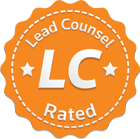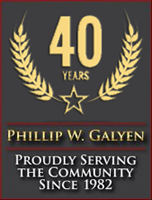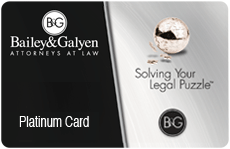Understanding Exactly What Happens When You File Claim for Personal Injuries Caused by an Accident
 You’ve suffered a needless injury because of the negligence, carelessness or wrongful acts of another person. You know that you need to retain legal counsel to protect your rights, but you’ve never been involved in any type of legal dispute before. What comes first? How do you initiate legal action? What does the entire process look like? Let’s take a look.
You’ve suffered a needless injury because of the negligence, carelessness or wrongful acts of another person. You know that you need to retain legal counsel to protect your rights, but you’ve never been involved in any type of legal dispute before. What comes first? How do you initiate legal action? What does the entire process look like? Let’s take a look.
The Complaint—Initiating the Legal Process to Recover Damages
In the immediate aftermath of a personal injury, your first concern should be your health. Once you’ve received the medical care you need, you want to move quickly to retain experienced legal counsel, someone who can be your intermediary with insurers and others, and who will take the right steps to protect your rights.
Typically, your attorney will meet with you, gather information, and conduct an investigation to confirm basic facts. To start the legal process, your lawyer will file a document referred to as a “complaint.” The complaint names the parties, provides a summary of the facts that led to the accident and your injuries, identifies the role of the defendant in bringing about the accident, and asks for compensation to cover your losses. Under the statute of limitations in Texas, your complaint must generally be filed within two years of the date of your injury (though there are some exceptions).
The Discovery Phase
Once your complaint has been filed with the court and served on all defendants, you’ll typically have a meeting with the judge, who will determine the likelihood of settlement and set the terms for discovery. “Discovery” is a legal term for the gathering of evidence. In our civil justice system, the concept of “open discovery” applies, preventing parties from using evidence at trial if it has not been made available to all parties before trial. The judge will specify a length of time to complete discovery and may set limits on certain types of discovery.
Pre-Trial Motions
Once discovery is complete and provided the parties don’t settle the dispute, the court will take steps to prepare for trial. First, though, the court may entertain motions from either party to either limit the extent of the trial or avoid the need for trial. For example, an injured party may allege that discovery has produced no valid defense to the allegations of the complaint and ask the court for a summary judgment of liability. Conversely, the defense may contend that the injured party has failed to provide credible evidence of injury or liability, and seek to have the complaint dismissed. It’s not uncommon to have some claims thrown out, but others retained.
The other essential part of pre-trial motions focuses on the admissibility of evidence. During discovery, the rules of evidence are typically relaxed, so that all potential evidence can be identified. Some of the things disclosed during discovery, though, may not be admissible at trial. The court will generally rule on those issues before trial, so that the jury does not hear inadmissible evidence.
Once all pre-trial motions have been heard and resolved, the court will typically put the case on the docket for trial. We’ll look at what happens during a personal injury trial next month.
Let the Personal Injury Attorneys at Bailey & Galyen Help You When You’ve Suffered a Personal Injury
At the law offices of Bailey & Galyen, we bring more than four decades of proven experience to people across the Lone Star State who have been hurt in any type of accident. We know the that the civil justice system can be confusing and intimidating, and will take the time to carefully explain the process at every juncture. Contact us by e-mail or 844-402-2992 call our offices at one of the convenient locations listed below. Our phones are answered 24 hours a day, seven days a week.








